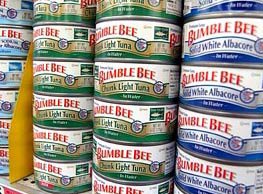 A reader asked me if I had an opinion about Emer'gen-C® Fizzing Drink Mix.
A reader asked me if I had an opinion about Emer'gen-C® Fizzing Drink Mix.I wasn't familiar with it so I had a look.
It appears to be a drinkable vitamin and mineral supplement - with a substantial dose of vitamin C. Its selling point seems to be that the ascorbic acid is ingested as mineral ascorbates.
A mineral ascorbate is just vitamin C attached to a mineral. For example, calcium ascorbate is vitamin C attached to the mineral calcium. By the way, the popular Ester-C® is primarily calcium ascorbate.
It looks like Emer'gen-C® uses several mineral ascorbates besides calcium ascorbate ... sodium ascorbate, potassium ascorbate, magnesium ascorbate, etc.
Mineral ascorbates have a reputation for being less irritating to the gastrointestinal tract. It is true that mineral ascorbates are not as acidic as non-coupled ascorbic acid. But during digestion they dissociate into their components, in this case a mineral ion and ascorbic acid, both of which are eventually absorbed. So, I remain not fully convinced that a mineral ascorbate is truly less irritating. Although I accept it works for some people. (The power of a person's belief, that is, the placebo effect, should never be discounted.)
As a multivitamin and mineral supplement, it seems fine. It contains moderate amounts of the B vitamins and some minerals. (That amount of alpha-lipoic acid seems miniscule.) Most other multi's also contain some amount of vitamins A, D, E, K and a few other minerals so I wouldn't depend on this as a source of basic vitamin insurance.
I'm personally not a proponent of high intakes of vitamin C; for me that would be anything over 500mg/day. I was taught that vitamin C absorption decreases as intake increases. And what doesn't get absorbed ends up as food for intestinal bacteria. Also, best absorption occurs with divided doses.
If you're looking to get a healthy dose of antioxidants, there are various other phytochemicals in fruits and vegetables that are gaining repect in the research community for their antioxidant abilities, e.g. alpha- and beta-carotene, lycopene, lutein, etc. Then there are the anti-inflammatory compounds found in plants, e.g. curcumin, resveratrol, etc. Manufacturers are beginning to add these discrete compounds to their vitamin pill blends. Still, there isn't a pill I know of that supplies the full array of antioxidants that you can find in nature.
Lastly, my reader asked me if I "believe we should get what we need via good food and sun and water, etc.". Generally, yes. (I loved the way she said that.) But I don't see the harm, and I do see some good, in taking low-to-moderate-dose dietary supplements.
And since she asked, I also believe that adequate activity, rest, stress management, mental challenges, positive relationships, and laughter can have just as powerful an impact on health as what we eat.








 While I was away, this series of articles appeared in the Chicago Tribune (You'll need to register, but it's free, easy, and worth it, especially for that fish calculator):
While I was away, this series of articles appeared in the Chicago Tribune (You'll need to register, but it's free, easy, and worth it, especially for that fish calculator): The single greatest source of mercury in our diet is fish. And, according to the
The single greatest source of mercury in our diet is fish. And, according to the 